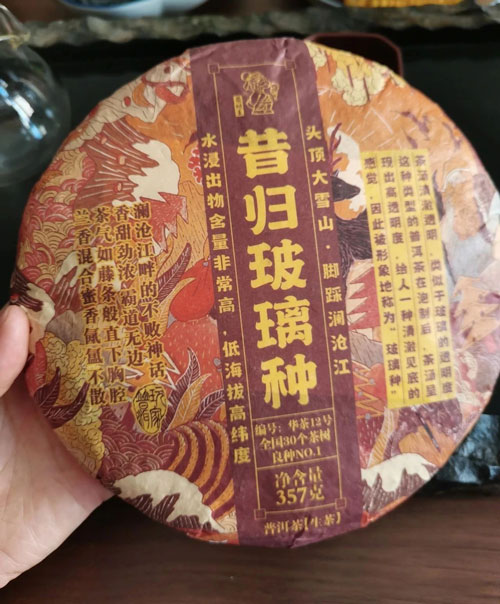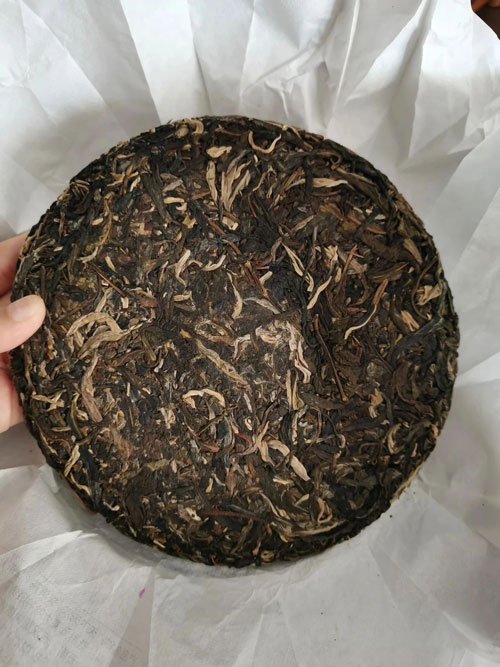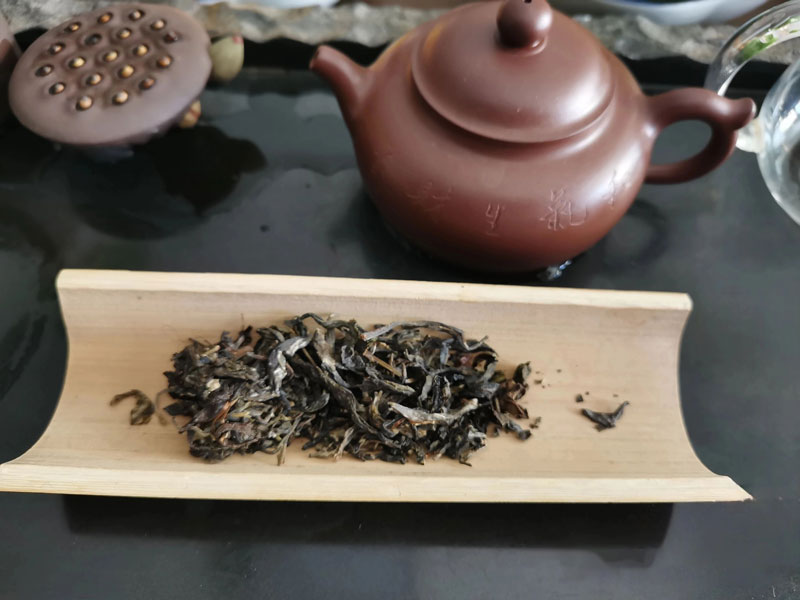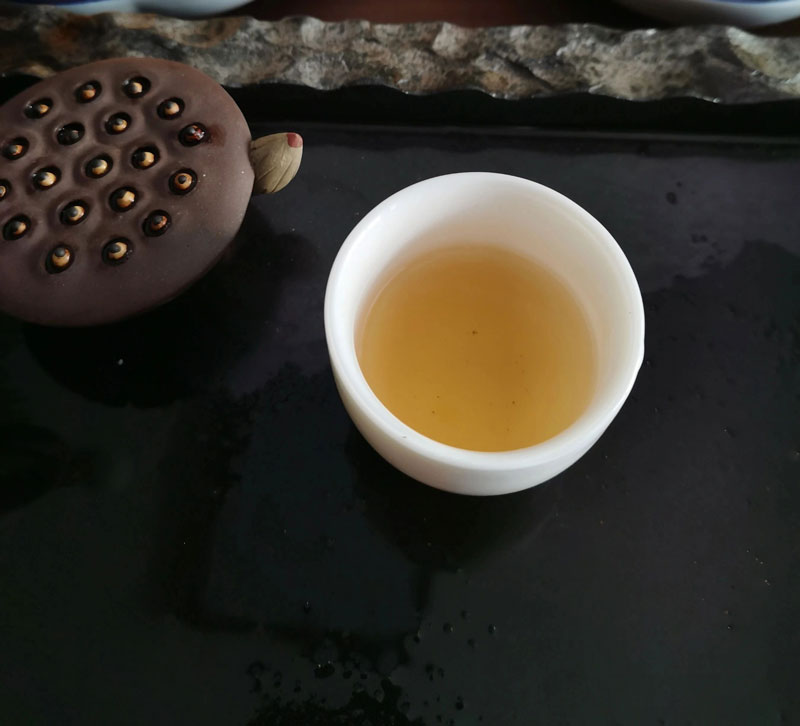Pu'er tea is famous for its unique "brewing resistance" characteristics, which is indeed one of its charms. In the Pu'er tea circle, "this tea can be brewed for twenty times" is often used as a standard to measure the quality of a Pu'er tea.
Many tea friends also believe that the more brewing Pu'er tea is, the better, but is this really the case?

◆ What is the "brewing resistance" of Pu'er tea?
The brewing resistance of Pu'er tea refers to the fact that after multiple brewing, the taste, aroma, concentration and color of the tea soup can remain stable and will not quickly become bland. Compared with other teas, Pu'er tea contains more substances such as tea polyphenols, caffeine, and tea polysaccharides, and forms a unique cell structure during the production process, which allows these substances to be slowly released and withstand multiple rounds of brewing, forming a long drinking process. Therefore, a high-quality Pu'er tea usually has good resistance to brewing.
But does resistance to brewing mean good tea?
Resistance to brewing is an important reference indicator for measuring the quality of Pu'er tea, which can reflect the richness and coordination of the substances contained in the tea. However, the quality of Pu'er tea is a multi-dimensional and comprehensive evaluation system. In addition to resistance to brewing, we also need to consider its aroma, taste, soup color, leaf bottom, and whether it conforms to our drinking habits.
High-quality Pu'er is often resistant to brewing, but it does not mean that resistant to brewing is good tea. Just like judging calligraphy cannot only look at the length of the text, the value of a tea is hidden in the layers of orchid fragrance and honey rhyme, in the rhythm of sweetness and fluid, and in the warmth and transparency of the throat after drinking.

◆ Key factors affecting the brewing resistance of Pu'er tea
The brewing resistance of Pu'er tea is affected by many factors. Understanding these factors will help us judge the quality of a Pu'er tea more objectively:
01. Raw materials are the foundation of brewing resistance
Large-leaf tea usually contains more substances than small-leaf tea and is more resistant to brewing. Ancient tree tea is older and has deep roots, absorbs more nutrients, and has a deep accumulation of substances, so it is usually more resistant to brewing than terraced tea.
Mature leaves with one bud, two or three leaves have moderate cell wall thickness and a steady rhythm of substance release, which can withstand brewing better than tender single buds. However, too coarse and old leaves can extend the number of brewing times, but will make the taste bland and hollow.
Tea trees grown in areas with high altitudes and fertile soil have richer and fuller substances in their tea leaves, and are relatively more resistant to brewing.
02. Process determines the rhythm of release
Rolling is a key step in the production of Pu'er tea. The degree of rolling and twisting is moderate, which can not only break the wall and facilitate the precipitation of the contained substances, but also maintain the integrity of the tea leaves. If the rolling and twisting are too light, the contained substances are difficult to precipitate, and the tea soup is bland; if the rolling and twisting are too heavy, the cells are damaged too much, the contained substances are released too quickly, and it is not resistant to brewing.
The degree of fermentation of Pu'er ripe tea will also affect its resistance to brewing. Ripe tea with moderate fermentation has proper conversion of contained substances and good resistance to brewing. Excessive fermentation will only leave a dark soup color, and the taste has been overdrawn in fermentation.

03. Storage shapes the character of resistance to brewing
The constant temperature and humidity of the dry warehouse allows the tea leaves to precipitate the internal substances in the slow transformation, and the substances are released more orderly, thereby improving its resistance to brewing. The quick success of the wet warehouse will make the tea "mature" prematurely, and the resistance to brewing and flavor will be discounted.
04. Brewing controls the degree of drinking
The same tea may be brewed a lot using different brewing methods. The amount of tea, water temperature, and soup speed all directly affect the brewing resistance. The more tea is added, the higher the concentration of the tea soup, and the more brewing resistance it has. The higher the brewing water temperature, the faster the internal substances will precipitate, which may make it less brewing-resistant, but it can stimulate the aroma.
Although low-temperature slow soaking can extend the number of times, it may lose its strength. The speed of each brewing directly affects the release of the substances contained in the tea. Quick soup can better protect the tea leaves and make them more brewing-resistant.
◆ How to correctly view the "brewing resistance" of Pu'er tea?
The charm of Pu'er tea lies in the different flavors brought by each brew. The first brew brings the freshness of the mountains, the middle brew reveals the mellow background, and the tail brew returns to the warm aftertaste. Enjoying this gradual change is the true meaning of drinking Pu'er tea.
Brewing resistance is only one aspect of quality, not all. Good Pu'er tea is usually more brewing-resistant, but Pu'er tea that is brewing-resistant is not necessarily the best tea.
The aesthetics of Pu'er tea vary from person to person. Some people like the domineering and strong flavor of Banzhang, while others are fascinated by the soft and delicate taste of Yiwu. The palatable one is precious, and the one that fits your taste memory is your good tea.
The brewing resistance is just an external appearance. The true meaning of the value that has passed through thousands of years lies in the physical and mental pleasure and long aftertaste brought by the tea soup.

There is no shortcut to the tea ceremony, and tasting requires heart. Let go of the obsession with numbers, and understand the silent language of tea in the temperature changes of each brew, so that you can find the true taste in the world of Pu'er tea.

%20--%3e%3c!DOCTYPE%20svg%20PUBLIC%20'-//W3C//DTD%20SVG%201.1//EN'%20'http://www.w3.org/Graphics/SVG/1.1/DTD/svg11.dtd'%3e%3csvg%20version='1.1'%20id='图层_1'%20xmlns='http://www.w3.org/2000/svg'%20xmlns:xlink='http://www.w3.org/1999/xlink'%20x='0px'%20y='0px'%20width='256px'%20height='256px'%20viewBox='0%200%20256%20256'%20enable-background='new%200%200%20256%20256'%20xml:space='preserve'%3e%3cpath%20fill='%23FFFFFF'%20d='M194.597,24.009h35.292l-77.094,88.082l90.697,119.881h-71.021l-55.607-72.668L53.229,232.01H17.92%20l82.469-94.227L13.349,24.009h72.813l50.286,66.45l58.148-66.469V24.009z%20M182.217,210.889h19.566L75.538,44.014H54.583%20L182.217,210.889z'/%3e%3c/svg%3e)




